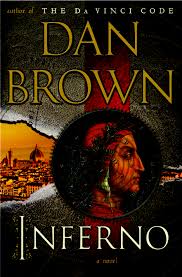 A cheating husband, the other woman, the other other woman, and a woman whose life is so devoid of purpose that she lives inside her head 85% of the time and then projects her fantasies onto strangers.
A cheating husband, the other woman, the other other woman, and a woman whose life is so devoid of purpose that she lives inside her head 85% of the time and then projects her fantasies onto strangers.
This veneer may convince you that this is a ripped page out of a soap opera, but it’s not. It’s most definitely a morose, psychological, white-knuckling story with gut wrenching tension found on every page.
The Girl on the Train by Paula Hawkins has been compared to Gillian Flynn’s Gone Girl, both having unreliable narrators and dealing with marital problems. Train is navigated by three, suspicious narrators: Rachel, the divorced ex-wife of Tom; Anna, newly wed wife to Rachel’s ex-husband Tom and subsequently the woman Tom had an affair with while he was married to Rachel; and Megan, a woman who ostensibly has no connection with any of the other characters, except that she lives in the same neighborhood as Anna.
Train begins with Rachel, divorced, an alcoholic, and unemployed. She rides the train almost every day and on her commute to nowhere, she passes the house of Jess and Jason, her perfect, doting couple. She doesn’t actually know them though. Rachel has dreamt up a whole world where these two live the life Rachel always wanted. One day, Rachel sees Jess, or rather Megan, but she’s not with Jason; she’s kissing another man. This permanently shatters Rachel’s illusion and after getting stupid drunk seeks out Megan to confront her. When Rachel wakes up the next morning though, she can’t remember anything from that night but learns that Megan has gone missing. What starts out as innocent curiosity (sort of) quickly morphs into obsession and dangerously leads Rachel through a macabre of events which may not only spoil Rachel’s image of Megan but also uncover a few other dirty secrets.
Hawkins’ novel surprisingly assimilates halves of insanity and acumen to make for a seemingly ordinary story. Contrary to Flynn’s Gone Girl, a novel very much about manipulating people’s perceptions and the use of artifices, Train is based more off the idea of the Rashomen Effect. Gone Girl, as I pointed out in my review, is an interesting reading experience that feels like the work itself is fully conscious while you’re reading it. Train simply relies on the fact that these characters are heavily biased towards each other and are being influenced by other elements (people or substances).Train organically gives us a hazy impression of events that is believable and reflects what a series of eye witness accounts would look like.
What bolsters the effect of this story is its delusional and hardened characters. Although there’s virtually nothing to see except women assuming traditional matriarch roles, i.e. Rachel, barren, Megan, stay-at-home wife and (possibly) emotionally battered woman, and Anna, a stay-at-home mom, we see these characters transform from repressed and broken to liberated and independent women.
Extrapolated from Train is a not so subtle allegory of overturning patriarchy and an extreme hostile feminine uprising. There’s a clear distinctive man v. woman conflict that emerges as a constant struggle in each of the woman’s lives. It’s not to say that these woman sole priorities were their male partners, although it plays a significant role, these women are clutching for something indescribable and missing from their lives. Even when they might have everything, except for Rachel, they’re restless and not quite happy.
It’s almost impossible to extricate myself from these characters with each of them possessing a certain toxic personalities that you’re able to identify with. Even when you don’t like these characters, they’re interesting. Megan exaggerates and self-victimizes. Anna is the self-involved woman, and Rachel is an addict and aimless; she cannot stop drinking or thinking about her husband long enough to focus on her own life.
Possibly one of the least credible characters but having the most coverage in the book, Rachel lends to the novel a weird dichotomy between sympathy and revulsion. At times, we feel for her but the intensity of her character, the lack of boundaries, filters our impressions and casts off any remorse we have for her. The book maintains this yo-yo effect and preserves it mostly within her character. It’s this juxtaposition that makes her so complicated; she’s by far one of the most complex characters I’ve come across this year and is simultaneously one of my least favorite characters—it’s really hard to love her when she essentially bar hops from one guy to the next.
Train doesn’t have the cutting, immaculate prose that Gone Girl has, but it is pronounced. I can only described it as a gem under rubble. Its works so well with the characters’ voices and adds a certain nervous, desperate edge to them.
Yes, the story starts out with a girl on a train (or rather a woman but I can argue semantics at a later time) but it diverges and becomes more. Train reels you back from its high intense moments back to a semblance of average-day life, with the characters cured of their afflictions and some secrets staying secrets.




